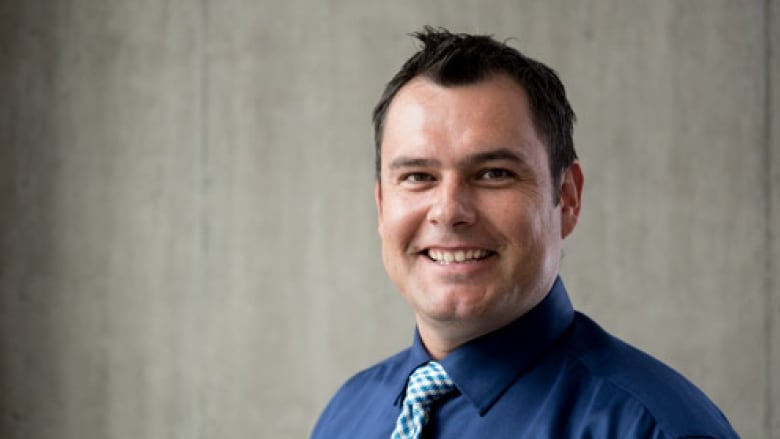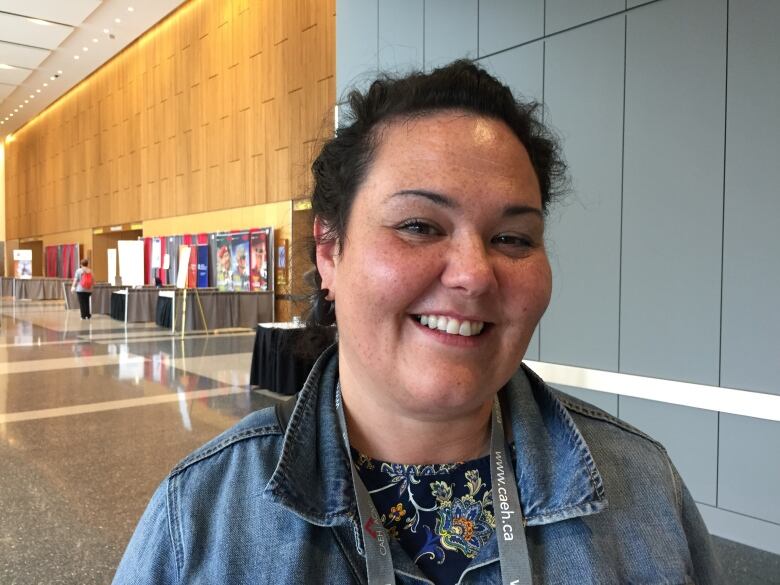Formerly homeless Mtis scholar rewrites the definition of Indigenous homelessness
Jesse Thistle says Indigenous homelessness isn't just about lacking a home, but about disconnection

Jesse Thistle is not your typical academic.
He's gone from being homeless himself to writing a new definition of "Indigenous homelessness."
As a national conference in Winnipeg focuses on the issue of Indigenous homelessness, Thistlewith the help and guidance of Indigenous peopleand elders across the countryhasproduced a document called Definition of Indigenous Homelessness in Canada.
Created for the Canadian Observatory on Homelessness a non-profitresearch institute it provides a new way of looking at, andunderstanding,Indigenous homelessness.
"The Canadian definition of homelessness is 'lacking a house or structure ofhabitation,'" said Thistle.
"Indigenous homelessness, from an Indigenous perspective, is about the disconnection from things like spirituality, the family, land, to each other, to cosmology, to Creator. That's the disconnection from 'all my relations,'" he said, referring to the Indigenous perspective oninterconnectivity.
- 'Dire' problem of Indigenous homelessness focus of national conference in Winnipeg
- Housing first model good for landlords, essential for vulnerable people, homelessness conference hears
Thistle a Trudeau and Vanier Scholar, and a PhDcandidate at York University in Toronto comes from a very different background from most academics. He has tales of skipping rent, sleeping on friends' couches and doing stints in jail, just to survive on the streets.
He has experienced various aspects of homelessness, includingthree years of what he describes as "absolute homelessness" and seven years of living in precarious housing situationslike shelters and couch surfing.
Thistle's new definition on Indigenous homelessnesswas released Thursday, justa day after Statistics Canada released its latest census data. The 2016 census data shows that there was a 30.8 per cent increase in the First Nations population between 2006 and 2016in total, with only 44.2 per cent living on reserve.
According to Thistle's report, onein 15 Indigenous peoplein urban centres experiences homelessness, compared to only onein 128 for the general population.
In Toronto, Indigenous people account for 15 per cent of the city's homeless population, although Indigenous peopleonly account for .05 per cent of the city's total population, Thistle's report says, quoting data from Statistics Canada.
Displacement is key todefinition
"It's just an injustice, to identify a very complex problem that's going on in First Nations, Mtis and Inuit peoples into the Canadian definition. It just didn't articulate what I went through myself and what people in my family have gone through," said Thistle, whose family comes from a Saskatchewan Mtiscommunity.
One of the keysto the Indigenous homelessness definitionis the displacement and removal of children from families and communities that has occurred throughout Canadian history throughresidential schools, the Sixties Scoop and today's child-welfare system.
"It's not just that they lose their house, they were probably taken away from their families and children. They become culturally and spiritually homeless when they're young, and that persists through their life," said Thistle.
"There's a lot of people in my family who have experienced homelessness based on our history and trauma as Mtis, Cree people."
He's hoping he can use his family's history and his own personalexperience tocreate change for Indigenous people experiencing displacement and homelessness.
"I'm just taking knowledge that's in the community and empowering it, and collectivizing that voice so that we can leverage resources and get it into Indigenous service providers' hands," said Thistle.
"Personally, I'm just trying to help that person that I was. I was homeless. I madea promise to my grandmother, too, that I would help in any way that I could with what happened to me."
Indigenous women experiencing homelessness
This week, homelessness advocates from around the country gathered in Winnipeg to discuss solutions to the problem, with a specific focus on Indigenous homelessness.
Kaummajuk Holly Jarrett, from Labrador, is one of the advocates who was invited to share her own experiences with homelessnessat the National Conference on Ending Homelessness.
Her first experience that she can remember was at seven years old, just after her parents split up. She recalls going to sit on the steps of a housing agency with her mother after hearing about a new housing development opening up. Her mother stayed on those steps until the agency agreed to give them a house to stay in.

"I ended up in an actual homeless shelter in Michigan for four months. That was the most extreme, violent, traumatic experience with homelessness that I've had," said Jarrett.
Since then, Jarrett has had multiple experiences where she has personally had to deal with homelessness, primarily in urban centres in Canada.
- Ottawa promises 'profound' change with $40B housing strategy
- Bonfire offers warmth as experts confront chilling facts of homelessness
The Inuk woman is the daughter of a residential school survivor, and was introduced to poverty in her childhood.
"I didn't know that it was a struggle. I thought that was life. Now that I know better, I know that it was the intergenerational effects of poverty and residential school abuse," said Jarrett.
Jarrett said that when it comes to homelessness, there is a difference betweenliving on- and off-reserve.
"There is no community in urban centres," she said.
"You have to go and seek it. Sometimes if you aren't part of the cliques here, then you just don't get any of the supports. When you go home, sometimes it is corrupt, but there's a duty to respect at home," Jarrett said.
"If I go on my experience, [Indigenous women] are the low man on the totem pole, and right above that is Indigenous men."
Addressing homelessness in First Nations communities will not only take money, she said. She alsosaid it's important to listen to those who have experience with homelessness to offer.
"Put people who have been homeless in situations, and at tables, where they can give their expertise in a safe manner, without people being afraid of us because we're angry."












_(720p).jpg)


 OFFICIAL HD MUSIC VIDEO.jpg)
.jpg)



























































































